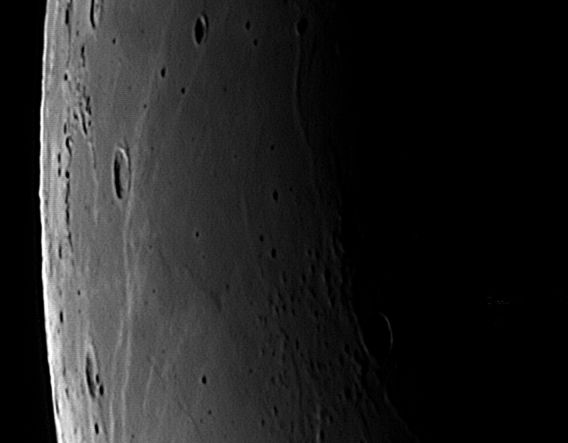Move your mouse over the picture to see the names of the various features.

|
The largest crater here is Eddington (138 Km in diameter and of uncertain depth), but
the most prominent crater is Seleucus, only 44Km in diameter but 2300 metres deep.
The Marius Hills are well shown here; as many as 321 domes and cones have been mapped
in this region and all are believed to be of volcanic origin. The area was the
subject of a Lunar Picture of the Day which shows
a Lunar Orbiter picture of the area and has an authoritative description. If my picture is
too dark to see the domes clearly, click on the picture to see an enhanced version.
The scale markers are approximately 100 Km north and east.
The picture was taken in infra-red light with a ToUcam attached to my LX200 on 31st August 2005 at 04:23 UT when the Moon was 26.3 days old.
|
| Date and Time |
31st August 2005 04:23 UT |
Camera |
ToUcam 740K |
Telescope |
LX200 at prime focus (FL 2500 mm) with IR-pass filter |
Capture |
K3CCDTools. Low gamma, 1/25", 45% gain, 421 frames |
Processing |
Registax. 63 frames stacked. Wavelets 1-3 = 10 |
Home Back to: Day 26 Pictures NW Quadrant


